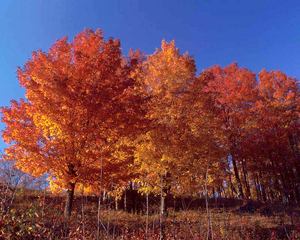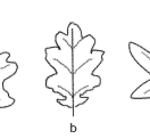Now that the weather is cooling off, it is a perfect time of year to enjoy all that fall has to offer. One of those events is the changing of leaves. While some places of the county are experiencing the first snowfall of the season, most of the country has yet to experience the fall foliage before it lands on the ground and winter takes its course. For those people who are inquisitive and want to know what type of tree they may be looking at, there are a few steps needed to identify a tree. First, you will need to have a tree handbook with you. I have seen many, and the larger they are, the more life size illustrations they will have. Secondly, look at the tree’s leaves and bark. This will help confirm what type of tree it could possibly be. After you know its characteristics, look it up in the tree reference book, and compare the region you are in to the region the tree prefers, growing season, and picture of the tree leaf. Listed below is a helpful guide that describes the different types of tree and plant categories available and how to classify them.
Tree Leaves
There are several types of leaves. First, there are broad-leafed trees. These trees have either simple or compound types of leaves. Simple leaves have one main leaf, whereas compound leaves are a group of leaves attached to one stalk. Some trees have needles and scales. These are found on conifers. These include pines, redwoods and cypresses. Next, there are blossoming trees which have blossoms that become fruit. The blossoms are pollinated by animals, like birds and bats. Fruits and berries are produced on these trees. The animals feed on the fruit and help spread the seeds of the tree. Some blossoming trees produce nuts, and cones.
Angiosperms and Gymnosperms
Angiosperms are flowering plants and their seeds are encased in a protective ovary. This division contains the larger number of species can be further subdivided into dicots and monocots. Dicots have two seed leaf structures and include many broadleaf trees such as the elm, maple and oak. Monocots have one seed leaf structure and include species such as the palm. Gymnosperms, on the other hand, do not produce flowers. Their seeds have structures such as cones, rather than a protective ovary. Conifers (needle-leaf trees) are a major group of gymnosperms.
Deciduous Trees
Deciduous trees are also known as broadleaf trees because the leaves are generally larger and wider than those of conifers. The larger leaf size means a greater surface area for photosynthesis, but it also means the leaf is too fragile to withstand winter conditions. Therefore, most deciduous trees drop their leaves in autumn.
Coniferous Trees
Finally, Coniferous trees keep their leaves throughout the year, shedding only the oldest leaves. Usually these leaves are lower down on the tree and do not receive as much sunlight as newly developed leaves higher up. Some of the best-known members of the conifer family are pines, spruces, firs, and hemlocks. The cones of the conifers are its flowers.




